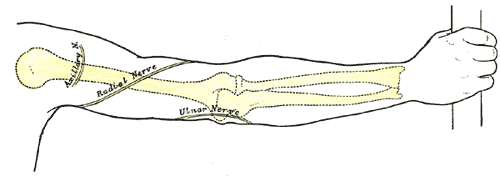Most of the things we do are repetitive. Typing on a keyboard is repetitive, playing a musical instrument is repetitive, writing is repetitive – even eating is a repetitive action. When repetitive actions are not performed in a properly controlled environment and in the right way, you put yourself at risk for Repetitive Strain Injuries.
The most common of Repetitive Strain Injuries is Carpal Tunnel Syndrome. You are at risk for CTS if you use your wrists and hands a lot, for repetitive tasks. Guitar players, assembly line workers, typists, computer workers and people who do heavy labour are the most at risk for CTS.
Repetitive Strain Injuries usually affect the arm and upper back. A person need not be suffering from only one condition. One can very often lead to others. For instance, CTS starts with slight tingling and numbness in the thumb. Next, that tingling and numbness spreads to the forefinger, middle finger and parts of the ring finger. After that, it affects the whole palm, and the tingling and numbness becomes more acute pain, especially at the wrist. Flexing and stretching the wrist becomes painful, and keeping it bent for even one minute can make the whole hand go numb.
After this stage, the pain and numbness might spread to the lower forearm. If left untreated at this stage, the whole arm, shoulder and upper back might become painful. All these are symptoms of Repetitive Strain Injuries, but the classic symptoms of Carpal Tunnel Syndrome are numbness and tingling in the thumb, forefinger, middle finger and parts of the ring finger, and pain in the wrist.
Quite often, people suffer from a combination of Repetitive Strain Injuries. While the causes can be isolated in most cases, some cases have idiopathic causes.
One tell-tale symptom of Repetitive Strain Injuries is increased numbness or pain during the night. The trouble is that people more often than not brush this off as sleeping in the wrong position or an arm ‘going to sleep’ because of lack of blood circulation. This is how it feels, but it is often a lot more serious than your arm deciding to take a nap.
The good news is that with a few lifestyle changes, Repetitive Strain Injuries can easily be handled. Something as simple as using a mouse pad that gives you extra support, or using a speech recognition software instead of using the keyboard much if you have a lot of writing to do can make a lot of difference.
Getting your posture right can give a lot of relief, as well, especially for upper back and shoulder pain. Using chairs that are the right height for you, that let you keep your feet flat on the ground with your legs bent at ninety degrees at the knee, and using the right desk that lets you keep your forearm parallel to the floor are also things that can relieve much of the pain for Repetitive Strain Injuries.

